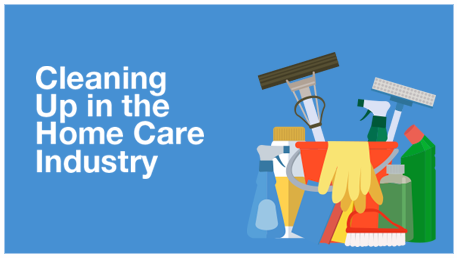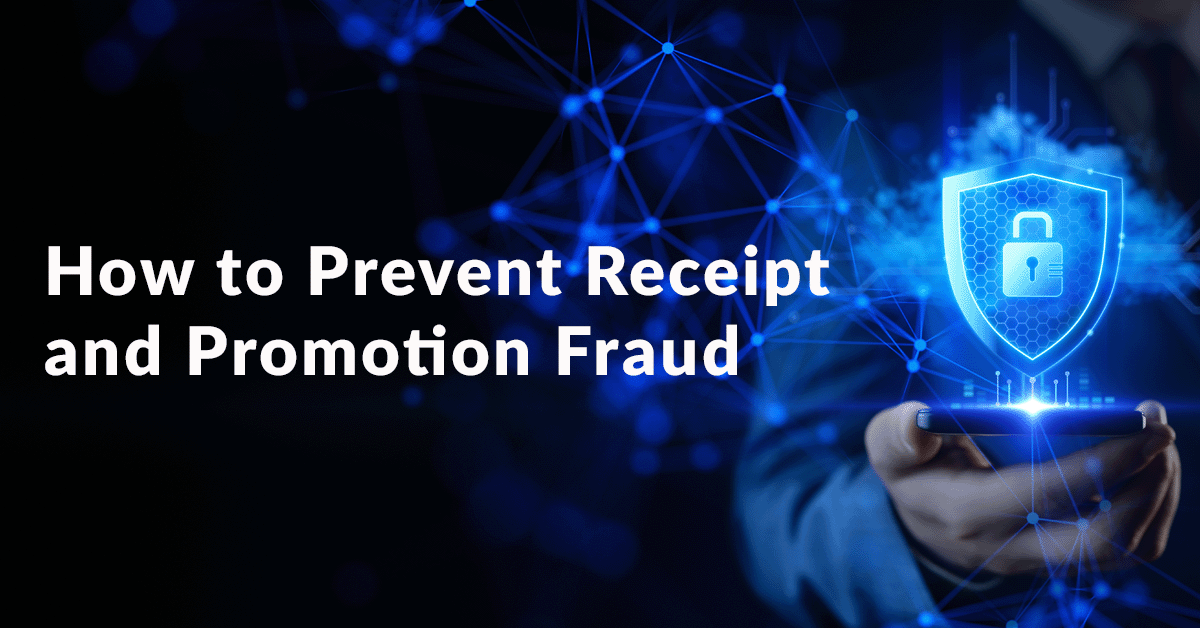IT’S A WHOLE NEW GAME in consumer packaged goods as brand loyalty is taking a backseat to price and convenience.Cleaning products, however, are dealing with additional pressures from informed, health-conscious consumers who are demanding more safety, more transparency, and more innovation. So how can brands respond to these priorities and stay relevant in an industry facing tremendous upheaval? We’ve put together a handy guide on some key trends emerging in the cleaning products market –and some tips on how to clean up in these competitive times!
First, Some Facts
- The Household Cleaners industry is expected to generate US$6.3 Billion in 2018, with annual growth of 1.4% (CAGR 2018-2021)
- Online sales are expected to contribute 9% of total revenue by 2021.
- Cleaning supplies are included in the “Top 4” CPG product categories consumers are purchasing online
- US consumers spent an average annual amount of US$91 on laundry and cleaning supplies from 2007 to 2016
Key Trends In Cleaning Products
CONCSIOUS CONSUMERS OFFER LOYALTY FOR TRANSPARENCY
- 79% (83% of Millennials) say it is important that cleaning products list their ingredients
- 94% say they’re likely to be loyal to a brand that offers complete transparency
- 81% say they would consider a brand’s entire portfolio of products if they offered transparency
- 39% say they would switch from the brands they currently buy to others that provide clearer, more accurate product information
US consumers have become more health-conscious in recent years, and have also become increasingly concerned about some of the chemicals used in home care products. Industries overall are feeling the pressure to be open about ingredients being used in manufacturing, but this is especially true for cleaning products. Transparent labeling initiatives for cleaning products are gaining steam, even being legislated via Right-to-Know acts, and as a result, the leading companies in home care are becoming more open about their product formulations.
HOME CARE PLAYERS GAIN SHARE WITH ENVIRONMENTAL AWARENESS
- Over 50 million consumers bought eco-friendly household cleaning products in the US, from 2010 – 2017
- Organic household cleaners saw 4.4% growth, and organic laundry products saw 19.4% growth in 2017. In comparison, their non-organic counterparts saw sales declines of 3.2% and 6.0% respectively
- Concern for the environment influences product purchases for 45% of consumers
US consumers are showing that they want home care products to contain natural ingredients and be environmentally-friendly. Many are concerned enough to want to know how these products are processed, the source of their ingredients, and the sustainability of their practices. Millennials are leading this trend – but ingredient concerns are transferring across the aisle. Sales of conventional products are declining, while sales of products that emphasize non-toxicity, sustainability and ‘clean’ ingredients are on the rise.
CONSUMERS EMBRACE INNOVATIONS AND PRODUCTS THAT MAKE CLEANING EASIER
- 63% of consumers say they often clean alone, highlighting a need for products that make the process quick and painless
- 68% (76% of Millennials) say they are willing to pay more for cleaning products that save time/labor
- 62% (72% of Millennials) say they are willing to pay more for cleaning products that extend the time between cleans
With shifts in lifestyles, consumers are less willing to spend hours immersed in time-consuming cleaning chores. Convenient, practical home care solutions that offer quantifiable time savings are the order of the day. Products such as detergent tablets, all-purpose cleaning wipes, and multi-purpose cleaners are gaining popularity, and investments in innovative cleaning products that protect surfaces from future spills, mold or rust are expected to pay off, especially with millennials who prioritize long gaps between cleans.
AS ONLINE SALES GROW, SO DOES PRIVATE LABEL COMPETITION
- In-store and online sales of private labels and store brands increased 4% in 2017, eight times more than national brand sales
- Private labels contributed an estimated $50 billion to retailers’ sales in 2017, an increase of $2 billion since 2016
- 81% of consumers buy private labels and store brands on every or almost every shopping trip
- 66% of millennials often buy private label options over name brands
As consumers become more open to purchasing CPG products online, big name brands are becoming vulnerable to digitally native private labels. For example, while subscription offerings like Amazon Subscribe & Save, or Jet.com’s easy re-order platform have made it much more convenient for individuals to order and reorder CPG staples, these same consumers become exposed to Amazon’s own private label products and Jet.com’s newly launched Uniquely J brand. Both online behemoths now have heavily promoted private labels, providing enormous competitive pressure to the national brands. With these new labels touting plant-formulations and sophisticated packaging, the emerging universe of private label is cool, digital, and designed to appeal to millennials’ sensibilities.
THE DIGITAL MARKETER’S TOOLBOX
Shelf space and retailer relationships have traditionally been the ‘make or break’ components for a successful CPG brand – but with online shelves and digital platforms, it’s the customer experience of a brand that matters. Digital marketing tools allow brands to build more intimate, familiar relationships with customers, and help to foster loyalty. How? The suggestions below can be a start:
Incorporate Transparent Labeling Tools: Brands can build trust by disclosing all the ingredients they use in their products and educating consumers on safety considerations. With digital tools, potential buyers could view all this information on the packaging itself, through a smart label. Innovative campaigns in other industries are already using augmented reality (AR) apps that allow consumers to just point smartphone cameras at product labels to unlock a world of static and animated information- from ingredient lists to videos, even giving them a glimpse into the entire supply chain or manufacturing processes being used.
- SC Johnson launched its ‘What’s Inside’ imitative as a commitment to transparency by listing every ingredient used in their products via a dedicated website
- ‘The SmartLabel QR code initiative’ allows consumers to use their smartphones to scan QR codes on product labels, leading them to SmartLabel landing pages that provide additional details about the product, including manufacturing location or ingredient origin, as well as any updated claims or warnings. Launched by the Grocery Manufacturers Association, this initiative has led top consumer brands such as PepsiCo, Unilever, and Nestlé to adopt SmartLabels
Showcase Brand Values Socially: For CPG brands, it can be difficult to foster a relationship or allegiance with the end users of their products. For consumers to feel a sense of loyalty, they need to feel invested in the story behind a brand, and in its core values. Corporate social responsibility initiatives are ways that CPG brands reveal their core values, and social media can be the perfect tool to showcase their stories. However, as much as social media audiences can elevate brands that lead such initiatives, they are just as able to smell out empty self-promotion and turn their backs. Authenticity is key.
- Tide’s Loads of Hope campaign has volunteered to provide laundry services free of cost in disaster-hit areas since 2005, most recently showing up for Hurricane Harvey’s 2017 devastation in Texas. The Loads of Hope truck, a mobile laundry truck outfitted with 12 washers and dryers has been called into service by residents and first responders via Twitter, leading to a wide social media following.
Create Informative, Mobile-Optimized Content: Good content is invaluable to building an online audience, and generating those all-important google rankings for a brand site. An effective brand could, for example, tap into the thirst for quality information shown by health conscious millennials, by regularly putting out blogs, or creating an expert-driven content hub. By becoming an important “go to” resource for information, it can create a community of loyal consumers. A wide variety of quality, timely information (probiotic-cleaning best practices, anyone?) can create trust for a brand, and can provide much-needed product and category information for worried consumers.
Be Creative with Video: Videos can be a particularly effective marketing tool, as four times as many customers would rather watch a video about a product than read about it — and almost 50% of internet users look for videos related to a product or service before visiting a store. Watchable, well-edited videos that showcase key product features, and answer key product questions can, by being promoted on YouTube and Facebook, generate a wider consumer base, and draw people to a branded website.
Tap Influencers for a Wider Social Reach: Influencer marketing can be a vital way to connect with wary consumers by putting a credible, relatable stamp of approval on a brand, and by transferring the perception of the influencer to the brand itself.
- In 2017, Clorox partnered with Google for an influencer campaign starring Golden State Warrior Stephen Curry and social media heavyweight King Bach. The aim was to introduce its Brita Stream product to a younger audience on social media. The “Best Roommate Ever” campaign was built around a comedic take on having a roommate who didn’t fill up the Brita pitcher. The campaign generated more than 16 million impressions across Facebook, Instagram and YouTube, making it a huge success
Capture Consumer Analytics via Continuity Marketing Promotions: CPG brands have traditionally had to rely on retailers for vital data analytics on consumers. But digitally-enabled continuity promotions are a disintermediated way of capturing this information directly, and, because they encourage consumers to come back over time, to craft accurate consumer profiles.
- Clorox wanted to increase basket size and incentivize consumers to register at its website. Snipp devised a 6-month sweepstakes promotion in which users received: 1 entry for registering online at the Clorox website, 1 entry per daily visit to the website, and 10 entries for uploading a valid receipt of 2 Clorox products. The promotion, managed and validated by Snipp, yielded valuable shopper behavior insights.
Activate Seasonal Promotions: Spring, for example, is the ideal time to launch short term promotions to tap into Americans’ enthusiasm for spring cleaning. The American Cleaning Institute, in its 2018 survey found that 76% percent of households will take part in the ritual of spring cleaning their homes this year.
- Purex launched a seasonal digital promotion with Snipp, intended to drive customers to switch to Purex and encourage sales of specific scents. As part of the promotion, unique rewards codes were printed on Purex packaging, allowing customers to enter the codes on a custom rewards store and redeem them for their choice of digital music rewards.
- Food Lion launched a ‘Spring Cleaning Sweepstakes’ program on the Snipp platform to drive an increase in the basket sizes of purchases. Consumers who bought three qualifying products at participating Food Lion grocery stores in one transaction during the promotional period received an entry into a daily drawing for prizes. Snipp validated all receipts, and, post validation, sent out gift card prizes.
Partner Up with Co-Branded Promotions: Convenience is key for optimizing CPG sales, and smart brands are capitalizing on this by bundling products to create a unified conversion of multiple products or ingredients—think of naturally complementary products (cleaning supplies and paper towels) to the benefit of both the consumer and the brand. With pre-arranged “virtual bundles”, consumers can, with one click, load a range of complementary brands into a cart.
- ARM & HAMMER and OxiClean wanted to increase basket size by driving cross purchase among their brands. The Clean Up and Win sweepstakes rewarded consumers who purchased $15 of ARM & HAMMER and OxiClean products in one transaction. They could send in a picture of their receipt to receive $10 of savings in coupons and an entry into a sweepstakes for a chance to win tickets to an All Star game fantasy getaway.





